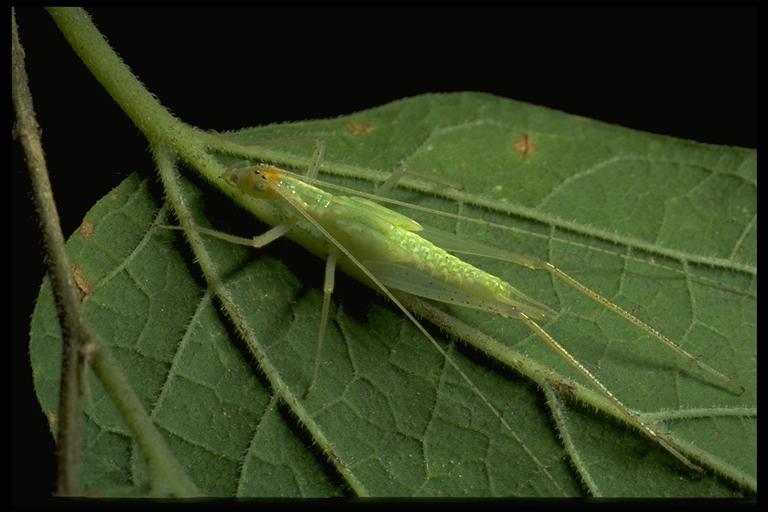
A tree cricket, Oecanthus sp. (Orthoptera: Gryllidae), nymph. Photo by Drees.
Common Name: Tree cricket
Scientific Name: Oecanthus sp.
Order: Orthoptera
Description:Adults are winged, but otherwise resemble nymphs. Tree crickets are whitish to light green, with slender bodies and long antennae. The snowy tree cricket, Oecanthus fultoni Walker, has black spots on the first two antennal segments.
Treehoppers and cicadas also deposit eggs in twigs and branches, causing some injury when high numbers occur. However, damage is usually not sufficient to justify control.
Life Cycle: In the fall, females lay eggs in shoots of 2 to 4 year old twigs and stems of trees, shrubs and vines. Eggs overwinter where laid and hatch in spring. Nymphs develop through five stages (instars) before becoming winged adults.One generation is produced per year.
Habitat, Food Source(s), Damage: In late summer, male crickets produce a high-pitched whine or “song.” Tree crickets are active at dusk (crepuscular) and at night (nocturnal), inhabiting trees, shrubs and high weeds, feeding on plant parts, some insects (e.g., aphids, scales) and other materials (e.g., fungi, pollen). Egg laying activities can affect plant health by injuring growth on twigs and branches or introducing certain plant diseases (e.g., introducing canker-forming fungi). Occasional damage to woody ornamental plants and fruit trees.
Pest Status: More often heard than seen; inhabit trees and shrubs but are not usually considered damaging. Egg-laying habits of females in nurseries occasionally damage woody ornamental plants and fruit trees. They are medically harmless.
Management: Not generally considered a pest.
For additional information, contact your local Texas A&M AgriLife Extension Service agent or search for other state Extension offices.
Literature: Helfer 1972; Johnson and Lyons 1988; Swan and Papp 1972.